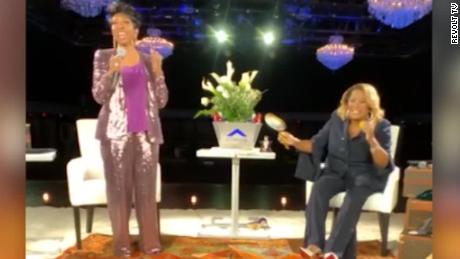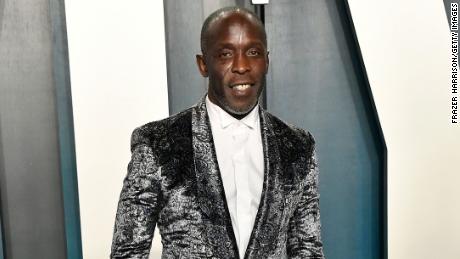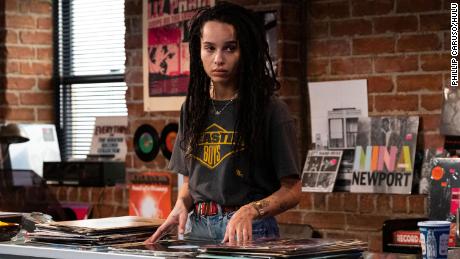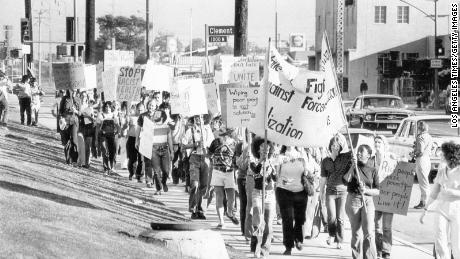Analysis: What does justice for Breonna Taylor actually look like?
B: The announcement was very, very moving. At the same time, like a lot of people, I had a reaction that I’ll sum up as “great, but”: The size of the settlement is great, very definitely, but what about the officers who were involved in the flawed raid that took Taylor’s life?
Six months later, they still haven’t been charged with a crime.
“It’s time to move forward with the criminal charges, because she deserves that and much more,” is how Taylor’s mom put it.
L: Yeah, that’s true. It’s also the largest settlement ever paid by the city of Louisville, right? So off the bat, that was shocking to me, even though it took months of nationwide protests to get there. Right away, though, the sheer size of the sum — and the fact that Taylor’s family got a sizable settlement at all — struck me.
B: I can sense a “but” coming …
L: You’re not wrong! BUT: At the end of the day, the money isn’t the most important part of the case. The money is just a bandage. It can’t address the underlying illness of police violence.
B: Which is why something else also jumped out at me: the promise to institute police reforms. The city agreed to offer a housing program to incentivize officers to live in the areas where they serve, involve social workers when appropriate and tighten the process of how search warrants are issued.
All that’s important, too, I think.
L: Yes! Taylor’s mom touched on the role of the reforms: “Justice for Breonna means that we will continue to save lives in her honor. No amount of money accomplishes that, but the police reform measures that we were able to get passed as a part of this settlement mean so much more to my family, our community and to Breonna’s legacy.”
B: That, to me, is the takeaway: The settlement is a big step, but it’s still just one step on a longer path to justice.
ICYMI: Patti LaBelle vs. Gladys Knight
For more than two hours, the two women didn’t just revisit their catalogues that have helped to define R&B (their hits include “Midnight Train to Georgia,” “Neither One of Us (Wants to Be the First to Say Goodbye),” “New Attitude,” and “If Only You Knew”). They reflected on how their careers have overlapped, gushed about their families, and showered praise on their “opponent’s” musical artistry. The show was a broadcast of Black love.
Or as LaBelle put it, simply but no less movingly, “We are so happy to be together. We’ve been together for many, many, many years.”
Recommended for your eyes and ears
Brandon recommends: Esquire profile of Michael Kenneth Williams
“Do you ask (Robert) De Niro, Is he tired of being typecast, all the mob movies he’s made?” Williams said in the story. He was referring to a question that people frequently throw at him, but not at White actors, about whether he’s concerned about being typecast, about portraying characters with broad parallels.
In “Lovecraft Country,” Williams plays Montrose Freeman, a poor, closeted, 1950s Chicagoan. In “The Wire,” he plays Omar Little — aka the Robin Hood of Baltimore — a poor, gay stickup man who has slick lines like, “You got me confused with a man who repeats himself.”
But as Williams argued, the focus on supposed typecasting does two things. For one, it glosses over the practical aspect of his work. ” ‘Aren’t you afraid of being typecast?’ I’m like, ‘No, I’m afraid of not eating,’ ” he said. “This is my job.”
The narrow attention that some people pay to Williams’ roles alludes to something else, too: the assumption that these roles are unwelcome, that they’re stale, that they don’t have anything to say about being Black in America.
The reality is that Williams’ characters grip audiences precisely because they have so much to say — about Black masculinity, about Black vulnerability.
“I will not allow Hollywood to stereotype or to desensitize my experience growing up in the ‘hood,” Williams said. “This is my job as an actor, to show the integrity, to show the class, to show the swagger, to show the danger, to show the pain, to show the bad choices. Those things exist in everyone’s community. But no one’s asking those actors if they’re afraid of being typecast.”
Fortunately, Williams isn’t daunted by the question. Television would be all the lousier if he were.
Leah recommends: Hulu’s “High Fidelity”
When Hulu’s take on the 2000 movie “High Fidelity” debuted in February, starring the incandescent Zoë Kravitz, the excitement was palpable.
Sure, initial reviews were mixed. But the modern reimagining of “High Fidelity” — which brought depth and record store-coolness to queer folks and women of color rather than to oft-centered cis straight White men — felt exhilarating. It spoke to a generation of young Millennials and Gen Z-ers, creating a world to which many young people of color could relate.
“I was trying to recreate a world that I know,” Kravitz, 31, told the New York Times ahead of the show’s debut, “and that’s what it looks like. It doesn’t look like a bunch of White girls.”
It’s not just the sexual and racial diversity of the cast that makes “High Fidelity” stand out. The show is one of the few that has dared to offer an honest portrayal of a messy, sometimes selfish, late-20s queer Black woman.
When the show was canceled last month, after just one season, Kravitz had a scathing remark for Hulu execs.
The line Kravitz was drawing is clear. Hulu, with its “Black Stories” tab, doesn’t seem to care about telling these stories as much as it’d like to seem.
The show is good. It’s got a great soundtrack (thanks in part to the mind of Questlove), a fun cast and witty dialogue. It’s a shame we weren’t allowed to see it grow, but its cancellation is also a painful reminder: that even after a historic summer, much of America is still only interested in minority stories on certain terms.
Around the office
After allegations arose this week regarding a high rate of hysterectomies, or the removal of uteruses, and general medical neglect at an ICE facility in Georgia, comparisons are being made with the US’s history of forced sterilization.
“It’s important to know that America was profoundly shaped by the Eugenics Movement. … The legacies continue to play out and the lessons have not been learned,” Alexandra Minna Stern, a professor and associate dean at the University of Michigan, told Shoichet. “It’s an integral part of understanding the history of inequality in the United States, and how social ideas can be twisted to promote dehumanization.”
![]()










